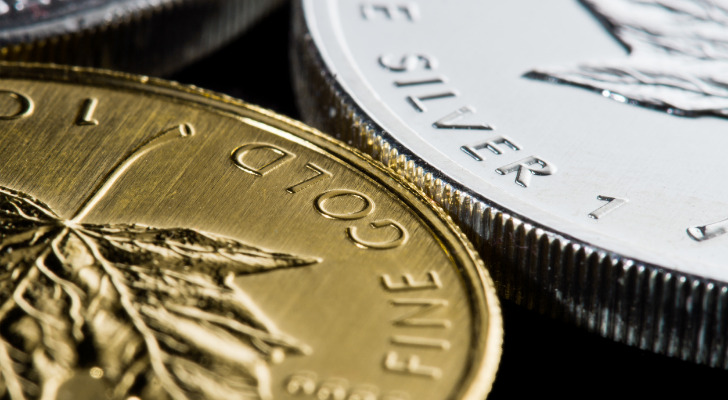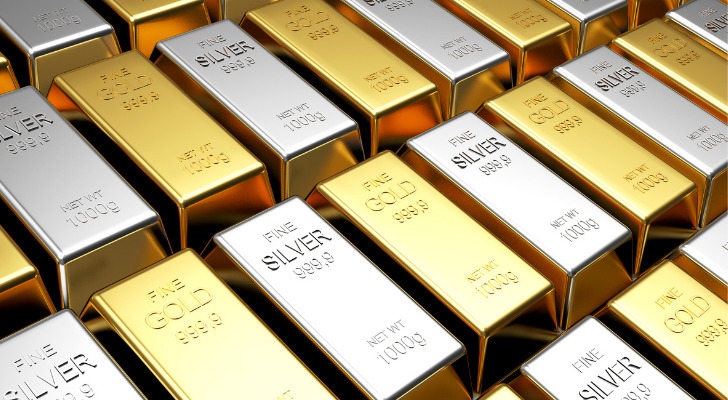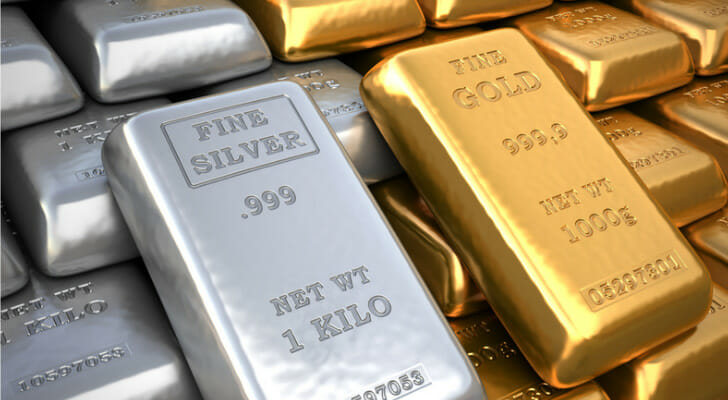Commodities trading means you’re buying and selling raw materials rather than finished products (like a house) or financial assets (like stocks and bonds). Commodities are assets like corn, coffee, lumber and ore. One common form of commodities trading is investing in precious metals, namely gold and silver. As an investment asset, gold and silver have very different properties and uses in your portfolio. For more help with investing in gold or silver, consider getting the help of a financial advisor.
Gold vs. Silver: Utility
The biggest thing that differentiates precious metal investing from other commodity investing is utility. For most other commodities, investors judge value based on supply and consumer demand. If you want to invest in coffee beans, for example, you can judge prices by how much coffee people are currently drinking, how tastes are changing, etc.
Precious metals are different in that they have relatively low commercial utility. Compared with other metals, there are relatively few consumer or industrial uses for assets like gold and silver.
However, silver does have much more industrial and commercial use than gold. Approximately half of all silver bought and sold on the market is used commercially, with applications ranging from dentistry to electronics. (This is still quite small compared to other metals, which are almost entirely used for production.) By contrast, gold has very few commercial applications aside from jewelry. This gives investors a basis on which to judge and predict price movements for silver since you can make decisions based on factors such as industry needs and how the global economy is moving.
Gold vs. Silver: Cost and Volatility

As of March 2025, silver and gold are trading at approximately $34.31 and $3,097 per ounce, respectively, according to Monex.com. Gold is historically much more expensive than silver. This is in part because silver deposits are nearly 20 times as common as gold. This leads to two outcomes for investors.
First, it’s much easier to invest in silver than gold. You can buy more of it for less money, meaning that less liquid investors can get into silver more easily. As with all financial assets, this can also expose you to greater potential gains and losses since you’re likely to see more change relative to the scope of your investment with a portfolio of silver.
However, that’s also the textbook definition of volatility. Low-cost assets tend to also be highly volatile specifically because small price changes have outsized effects on the underlying investment. For example, at current prices, silver only needs to change price by about $3 per ounce to have a 10% price fluctuation. If the price of gold changed by $3, it would represent a change of far below 1%.
Volatility isn’t necessarily a bad thing but it is something to watch out for, especially if you’re seeking a long-term investment.
Gold vs. Silver: Relationship to Broader Market
The price of gold tends to move inversely to the stock market. Gold is what’s known as a “countercyclical investment.” This means that it tends to go up when mainstream assets go down and vice versa. Historically, the worse the stock market does the more investors flock to gold. By contrast, when times are good, investors tend to pull their money out of gold and put it into assets with greater links to the overall economy.
As a result, many investors hold gold in their portfolio specifically for if they need liquidity during a downturn. For example, a recession is the worst time to sell stocks but the best time to buy them. Having a pre-existing investment in gold can give you a valuable asset to sell during a recession so that you can buy other people’s undervalued assets without selling your own.
By contrast, silver tends to move with the economy overall, at least more so than gold. This is in significant part because of the same commercial applications that make silver a more predictable asset. When the economy slows down, industries need less silver for manufacturing, driving the price down.
Gold vs. Silver: When Should You Buy Gold?

To determine the right time to buy gold, focus on periods of economic uncertainty or high inflation. Gold is known for its ability to maintain value in these conditions, making it a reliable asset for wealth preservation. Its role as a safe haven becomes especially prominent when other investments may be losing value.
Gold should be considered over silver if you prioritize security in your investments. While silver might attract investors seeking more volatile opportunities and potential higher gains due to its industrial applications, gold provides more stability and less price fluctuation.
Including gold in your investment portfolio is also a strategic move for diversification. It offers a hedge against potential losses in other asset classes, particularly in turbulent market conditions. This makes gold a prudent choice for those aiming to safeguard their investments and ensure long-term stability.
A portfolio focused on gold might include physical gold like bars and coins, as well as gold ETFs and mutual funds that invest in gold miners and bullion. Physical gold can offer a hedge against economic downturns, while gold securities could add liquidity to your investments.
Gold vs. Silver: When Should You Buy Silver?
Silver can offer an affordable entry point into precious metals investment, especially during periods of economic growth or technological advancement. Its use in various industries, including electronics and medical technology, means its demand can increase alongside industrial expansion, potentially enhancing its value.
Investors may consider buying silver over gold when they see a rise in industrial demand or during technological innovations that require silver components. This metal’s price volatility can offer opportunities for gains, making it a suitable option to diversify your investment portfolio beyond traditional assets.
If you’re looking for quick returns, silver could also be an attractive option because of its lower price point when compared with gold. And keeping its significant role in industrial applications, value can drive up fast with favorable market conditions.
A silver portfolio can include physical silver like coins and bars, silver ETFs and stocks of silver mining companies. This mix could help you benefit from the tangible value of silver and the growth potential of silver-related businesses. It also offers a balance between physical asset security and the liquidity of market-traded funds and stocks.
Bottom Line
Gold and silver are especially popular commodity investments, in large part because of their historic relationship with money. Governments once used gold and silver to make their currency. While no major economy uses gold or silver as the basis for its currency any longer, investors still see these two metals as active stores of value. Silver is more volatile, cheaper and more tightly linked with the industrial economy. Gold is more expensive and better for diversifying your portfolio overall. Either or both may have a place in your portfolio.
Precious Metal Investing Tips
- Arguably the best use for gold as an investment is to mitigate portfolio risk. This is a good asset for market downturns since it can give you a source of value at a time when other investments are cratering.
- A financial advisor can help you decide if gold or silver should be part of an investment portfolio. Finding a financial advisor doesn’t have to be hard. SmartAsset’s free tool matches you with vetted financial advisors who serve your area, and you can have a free introductory call with your advisor matches to decide which one you feel is right for you. If you’re ready to find an advisor who can help you achieve your financial goals, get started now.
Photo credit: ©iStock.com/Inok, ©iStock.com/rticknor, ©iStock.com/Ravitaliy
